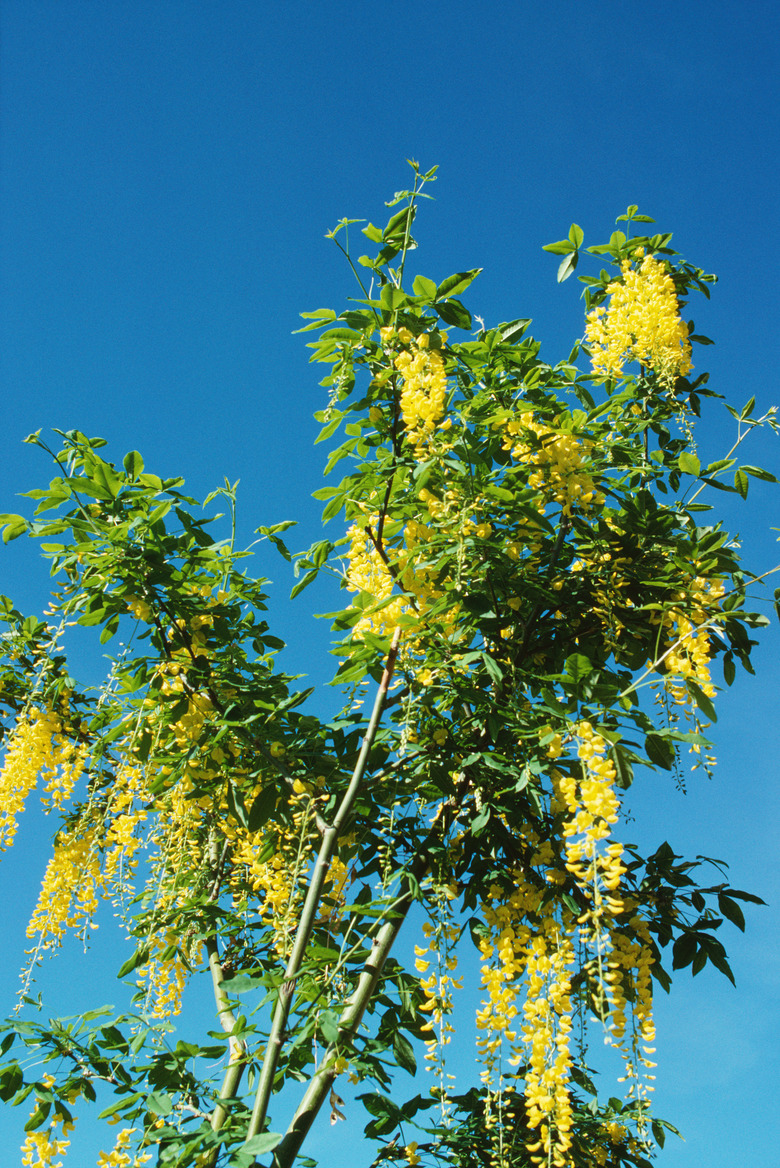Problems With A Golden Rain Tree
The golden rain tree is a member of the soapberry family. The tree features hundreds of tiny flowers that are comprised of four golden petals with a cinnamon-colored center. The panicles become seed pods that are 2 inches long and set in three sections. The pods start out green but age to brown and cling to the tree over winter. Several problems can develop with a golden rain tree.
Verticillium Wilt
The University of Florida notes that golden rain trees are susceptible to verticillium wilt, a common fungal problem on trees. It attacks leaves and causes wilting and death of the foliage. If heavily infected the entire tree can die. Proper fertilizing can increase the vigor of the tree and help it withstand the fungus.
- The golden rain tree is a member of the soapberry family.
- The University of Florida notes that golden rain trees are susceptible to verticillium wilt, a common fungal problem on trees.
Insects
Scale insects can become a problem on golden rain trees. These are scab-like protrusions on the bark that house tiny sucking insects. They will reduce the health of the golden rain tree but will not kill it. Horticultural oil sprays can help control scale. Boxelder bugs bugs feed minimally on the tree but may leave black smears on it from their excrement.
Hardiness and Strength
Golden rain tree is not hardy in extremely cold zones. Frost damage can occur, especially on the tips of branches. The wood is also weak and can sustain storm damage. Severe winters can result in twig kill. The tree has a fairly limited root system that does not offer adequate anchorage in windy areas, resulting in blow-overs.
- Scale insects can become a problem on golden rain trees.
- The tree has a fairly limited root system that does not offer adequate anchorage in windy areas, resulting in blow-overs.
Invasiveness
The tree can overseed in warm areas. It has become a nuisance plant in many warm climates and is considered invasive. The IFAS Assessment of Non-Native Plants in Florida's Natural Areas recommends that it be heavily managed in central and southern parts of Florida to prevent the tree's "escape" from cultivation.
Care Of A Golden Rain Tree
Choose a bright, sunny location for your golden rain tree in U.S. Department of Agriculture plant hardiness zones 5 to 9. The tree is adaptable to soil as long as it is well draining. Prune dead, broken or diseased branches anytime of year. Spray the tree in the spring with regular applications of a horticultural oil such as neem oil to smother unhatched eggs.
- The tree can overseed in warm areas.
- The IFAS Assessment of Non-Native Plants in Florida's Natural Areas recommends that it be heavily managed in central and southern parts of Florida to prevent the tree's "escape" from cultivation.
References
- University of Arkansa: Golden Raintree
- Floridata: Koelreuteria Paniculata
- University of Minnesota: Boxelder Bugs
- Missouri Botanical Garden: Koelreuteria Paniculata
- Plants for a Future: Koelreuteria Paniculata
- Cal Poly San Luis Obispo Urban Forest Ecosystems Institute: Koelreuteria Paniculata "Fastigiata"
- Floridata: Koelreuteria Paniculata
